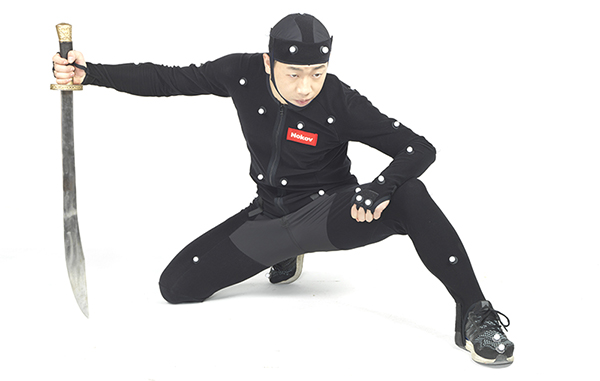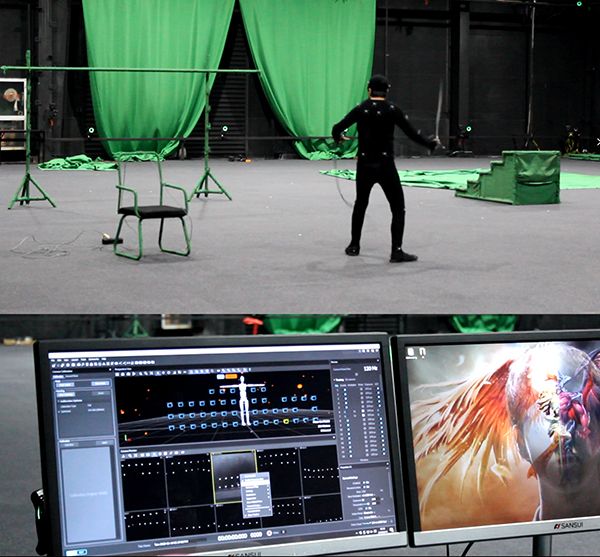Optical motion capture technology, a rapidly emerging frontier technology in recent years, has been widely used in the production of popular Hollywood science fiction blockbusters known to the public, such as "King Kong," "The Lord of the Rings," "The Avengers," "Titanic," "Avatar," and others. Motion capture actors perform a series of prop-less acts in front of a green screen, and their movements are recorded to create stunning visual effects.

The following will be divided into three sections: the advantages of motion capture in film and animation special effects production, the motion capture special effects production process, and practical application cases. Each section will provide a detailed introduction to optical motion capture applications in film and special effects.
1 Advantages of Motion Capture Systems
1.1 High Efficiency
In traditional film and visual effects, the creation of virtual characters and scenes involved frame-by-frame manual keyframing by special effects artists. For a 200-minute movie, this method would require fifteen animators working for three months to complete. In 1914, rotoscoping technology emerged, which involved projecting filmed live-action footage onto glass and having artists trace the human figures onto paper, frame by frame. Subsequently, motion capture technology gradually developed. With the help of advanced computer software and hardware, captured live-action performances could be directly synchronized with virtual characters in the computer, greatly shortening the special effects production cycle to one-tenth or even less of the original time.

1.2 High Quality of Finished Films
Human motion is the external manifestation of coordinated muscle and joint movements throughout the body. Some subtle motion changes are difficult to reproduce through manual keyframing. Motion capture technology, however, can achieve a high-fidelity representation of real human actions. Additionally, the motion performance of a virtual character can be realized using more specialized stunt doubles to express different actions of the same virtual role, enhancing the portrayal of virtual characters' movements. This also expands the possibilities of presenting interactions between humans and objects within virtual scenes. Through motion capture, more lifelike anthropomorphic representations of trees and small animals can be achieved. The combination of an actor's performance with advanced motion capture technology allows for the portrayal of all things in nature.
With the popularization of motion capture technology, professional motion capture actors like Andy Serkis, famous for playing "Gollum" in "The Lord of the Rings," has founded a specialized motion capture acting school in Hollywood, now boasting a scale of five to six hundred people.
1.3 Reusable Motion Data
In repeated performances of the same scene, there will be subtle differences in each enactment by the actor. By recording the motion capture data of the actor in one scene, it is possible to replicate the performance in different motion capture setups through data playback. Simple actions such as walking and running can also be extracted and applied to multiple scenes.

2 Using motion capture in film animation production workflow
2.1 Scene Construction and Character Rigging
The setup of an optical motion capture system at a site first requires arranging optical cameras at the filming location to ensure a sufficient number of cameras are positioned around the space, and adjusting the camera angles to ensure that their field of view covers the motion capture area. This is followed by calibrating the site with motion capture software to establish a spatial coordinate system.
Next, markers are placed on the surfaces of actors and props, a marker set is created and bound to the software model. During this process, actors must perform a set of motion capture data collections. The markers are used to bind to the human skeleton, which allows the skeletal data to be imported into third-party software such as Unity, Unreal, MotionBuilder, Maya, etc. This integration combines the virtual characters with the real-life motions of the actors, enabling the animation and driving of virtual characters based on actual human movements.
2.2 Actor Motion Capture Data Acquisition
When motion capture actors perform in a real scene, they are usually seen wearing a tight black suit with white balls placed at key positions on their body. These balls, known as markers, are coated with reflective material that can mirror-reflect the light shone on them. Optical motion capture cameras placed around the area emit infrared light, and when the infrared light reflected back from the markers is received by at least two cameras, these markers are located. This allows for the capture of motion data in the software.

2.3 Post-Processing of Data
The primary tasks involve data cleaning and correction to address issues encountered during motion data collection, such as obscured marker points leading to data errors or loss, and penetration issues with some movements. These issues necessitate software-based corrections, manually linking different movement data to eliminate penetration movements.
3NOKOV度量动作捕捉用于影视动画制作实际Case
3.1 Hangzhou Tinghao Electronics and Animation, motion capture special effects production with green screen

3.2 Guangzhou Sports University, production of soccer animation instruction